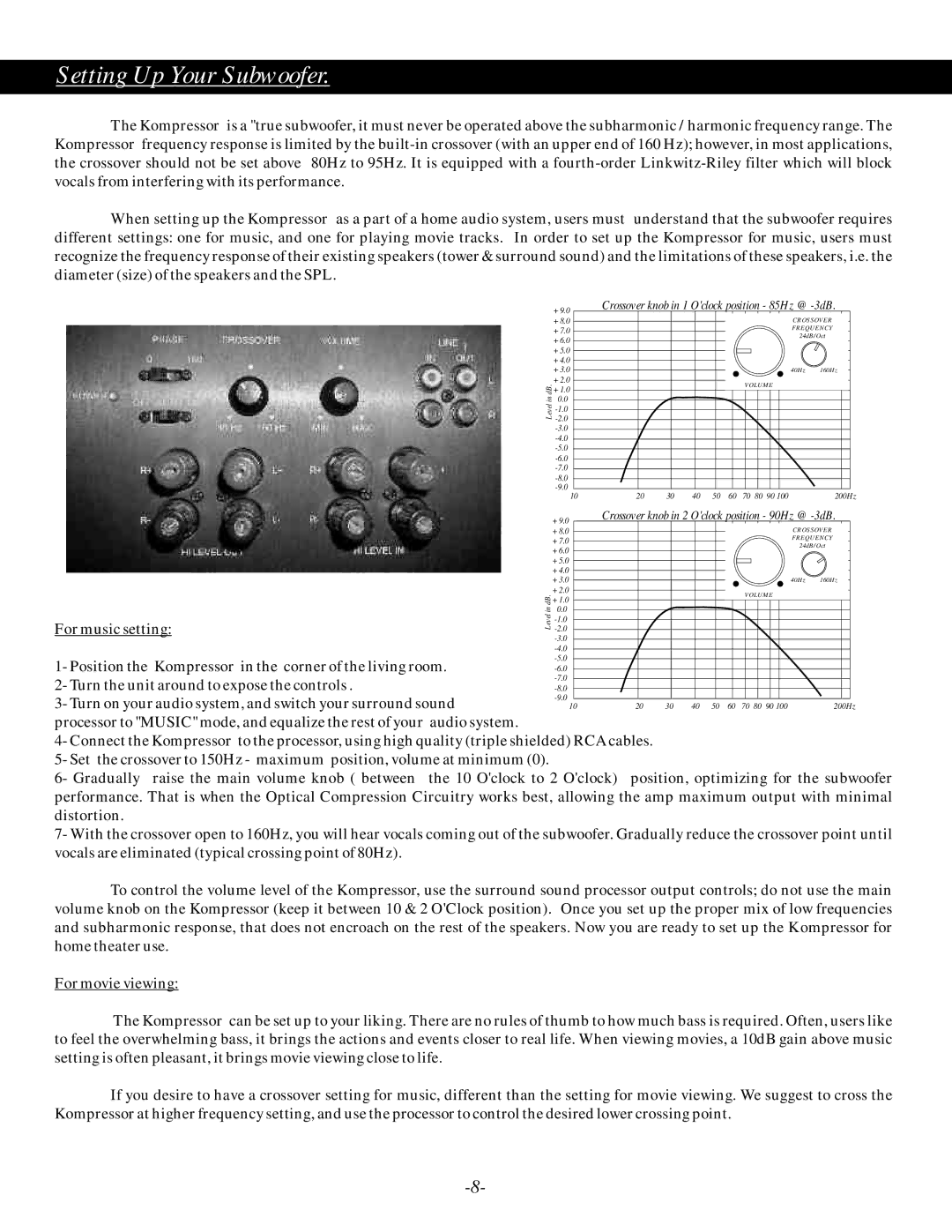S-12, S-10 specifications
Earthquake Sound S-10 and S-12 subwoofers are exemplary audio solutions that cater to audiophiles and home theater enthusiasts seeking powerful and finely tuned bass. Designed with precision and equipped with advanced technologies, these models deliver exceptional sound performance capable of enhancing the overall listening experience.The Earthquake Sound S-10 features a robust 10-inch subwoofer driver, while the S-12 boasts a much larger 12-inch driver, catering to different room sizes and personal preferences. Both models are designed to produce deep, rumbling bass that is crucial for genres like hip-hop, electronic, and cinematic soundtracks, ensuring a full-range auditory experience that resonates with the listener.
One of the standout technologies featured in both the S-10 and S-12 is the use of high-power amplifiers that enhance performance and efficiency. The integrated amplifiers are designed to provide clean power to the driver, resulting in minimal distortion and a tighter bass response. This is further complemented by the advanced digital crossover system present in both models, which optimizes signal distribution, ensuring that the subwoofers produce precise frequencies without overlapping with other speakers.
The build quality of the S-10 and S-12 isn't just aesthetically pleasing; it's functional too. The enclosures are constructed from high-grade MDF (Medium-Density Fiberboard), significantly reducing resonance and standing waves that can interfere with sound quality. The cabinets are designed with a ported or bandpass configuration, allowing for improved airflow and enhanced efficiency, resulting in louder bass without using excessive power.
Both models also feature adjustable phase control, which allows users to synchronize the subwoofer with their main speakers easily. This is particularly beneficial in home theater setups, where precise timing is crucial for achieving immersive soundscapes. Additionally, the variable low-pass crossover allows users to tailor the bass response to match their specific room acoustics and speaker configurations.
In summary, Earthquake Sound S-10 and S-12 subwoofers are crafted to deliver extraordinary sound performance. Enhanced by cutting-edge technologies, robust build quality, and user-friendly features, these models are ideal for anyone looking to elevate their audio experience. Whether for home theater systems or dedicated music setups, the S-10 and S-12 subwoofers stand out as reliable choices that offer breathtaking bass while ensuring clarity and precision in sound reproduction.

